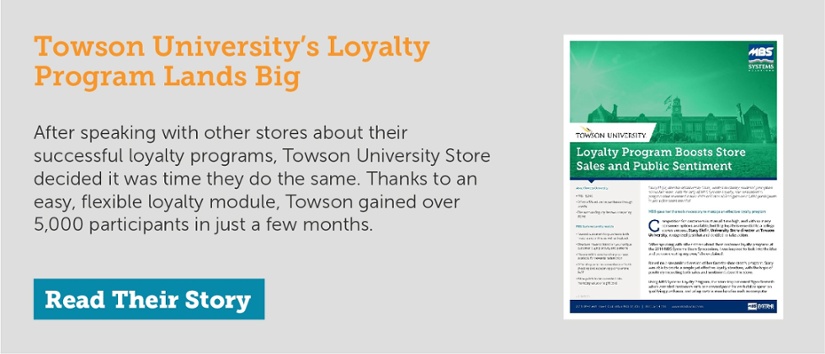Faith, devotion, loyalty: College stores need more than foot traffic. They need to take centerstage as a customers’ one-stop-shop for campus necessities. Rewards programs have become one of the most common ways retailers seek to inspire fidelity in consumers, but how well do they work?
 Although popular and widely used, many loyalty programs fail to attract the income they might, according to a 2017 Accenture study.
Although popular and widely used, many loyalty programs fail to attract the income they might, according to a 2017 Accenture study.
- 71% of customers surveyed claim loyalty programs do not inspire loyalty.
- 77% of consumers say companies now lose their loyalty faster than they did three years ago.
- 23% have either a negative or non-existent reaction to companies’ loyalty efforts — and younger consumers are especially critical.
That said, it’s still wise to have a loyalty program. 90% of companies do, according to Accenture. It’s something consumers have learned to expect. However, it’s also important to cultivate a distinct program — one that speaks directly to what your store offers customers.
An integrated loyalty module in your store’s POS will facilitate efforts. Software like this allows you to:
- Reward customers for purchases and buyback participation.
- Build rewards tailored to students’ buying activity.
- Choose merchandise to offer for rewards redemption.
- Allow customers 24/7 access to point redemption with online integration.
Once you have the technology, take additional steps to boost customer response:
- Personalize rewards — Target savings based on known customer preferences. For instance, if you notice a particular product flies off the shelf faster than others — as Lane Community College’s Titan Store did the upmarket water bottle Hydro Flask — you could advertise that students who buy course materials with you will receive savings on the item.
- Use campus influencers — Young people value word-of-mouth, especially on social media. Gen Zers heed the advice of peers and YouTube® personalities more than celebrities. Athletes, student leaders, beloved teachers and administrators: these high-profile campus personalities make great candidates for influencer marketing. If they endorse your store and rewards program on social media, students will notice. JetBlue garnered 2,363 engagements on its June 2017 posts, according to eMarketer. The company’s influencers, meanwhile, accumulated an average of 241,226 engagements.
- Keep it simple — Customers are more likely to use a rewards program that requires minimal effort. Do your best to streamline the registration experience.
- Integrate rewards into customer service interactions — Point out areas where students can save while they are in your store. For instance, if a laptop purchase will beget savings on a printer or scanner, mention the potential discount to students browsing the computer section as a courtesy. Such interactions can beget a feeling of “warmth” in customers, which, in turn brings positive word-of-mouth, according to Accenture. 14% of customers who feel connected to a store or brand in this way will spread the word on social media.
The UC Davis Stores Aggie Kickbacks is a great example of a program that has been responsive to its customer base. Students had been slow to sign on to rewards at first, because the process required them to register online. So, the store used its MBS Systems POS to make kickbacks available to members at the register. Now, an employee can inform a customer during check out that he or she has, say, $2 in savings available. As a result of the change, students flock to the program.
In short, good customer service allows a store to maximize the profit gained from a rewards program. Talk to students. Act on data that reveals buying preferences — and ensure your program reflects the unique qualities of your store.




